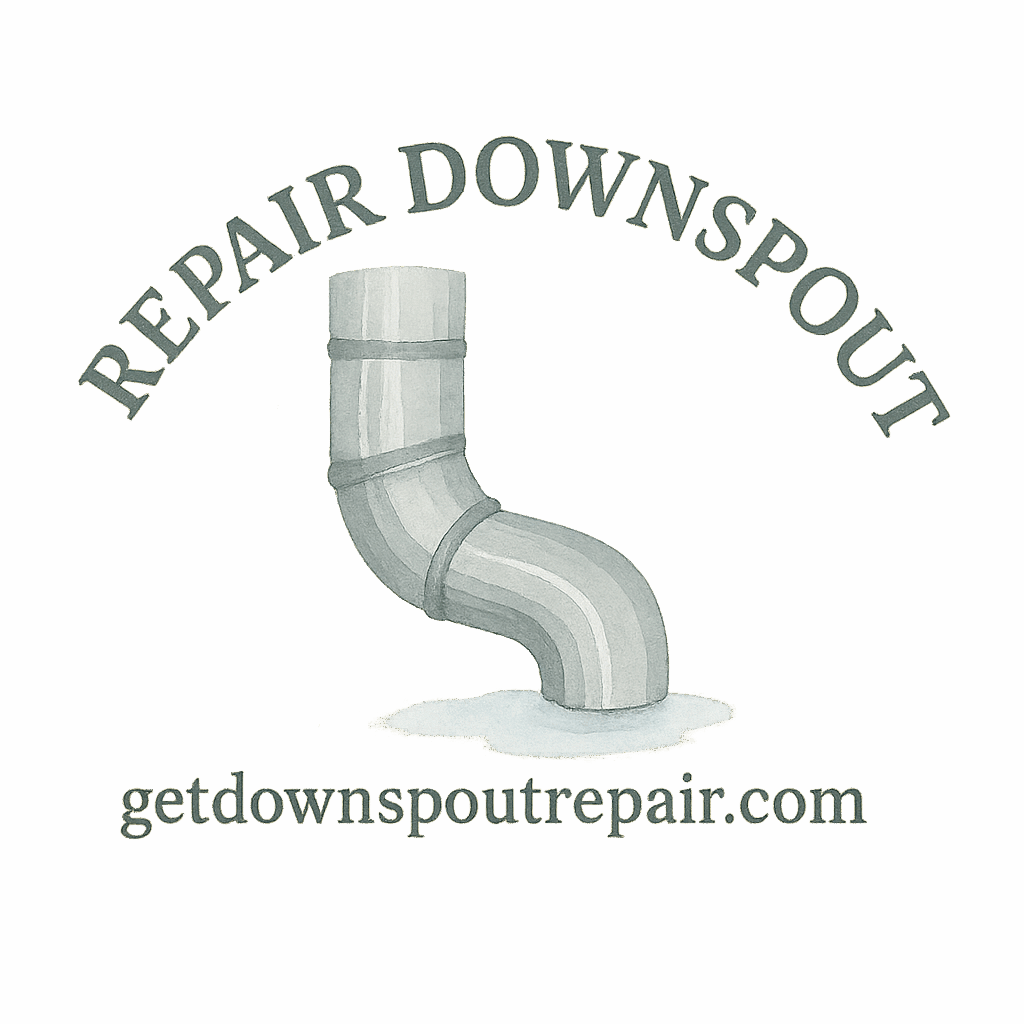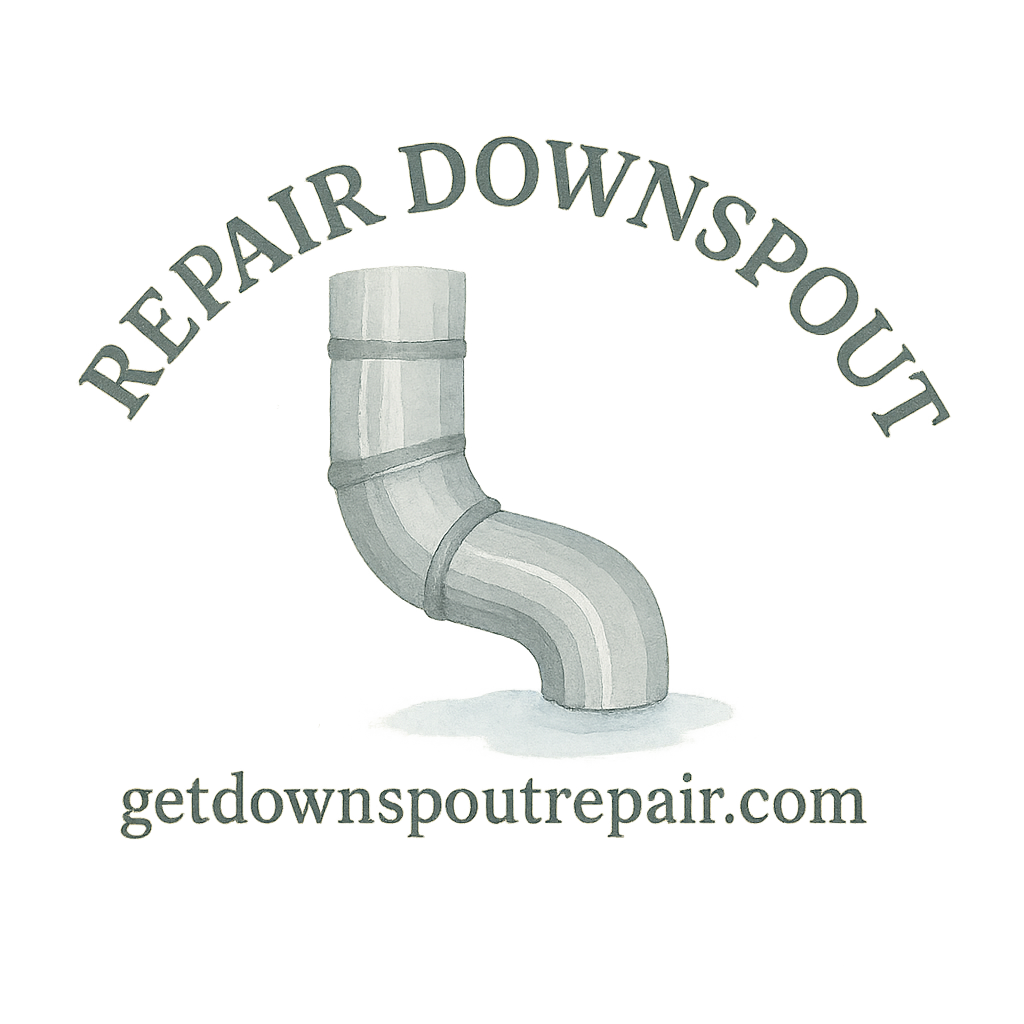Introduction: Why Downspout Repair Matters
If you’ve ever noticed pools of water around your foundation after a heavy rain, chances are your downspouts aren’t doing their job. Downspouts may not be glamorous, but they’re critical in protecting your home from costly water damage. By learning a few DIY downspout repair basics, you can save money, extend the life of your gutter system, and avoid calling in a pro every time something goes wrong.
In this guide, I’ll walk you through everything you need to know about downspout repair—tools, fixes, safety tips, and even when it’s time to call in professional help.
Understanding Downspouts and Their Role
What is a Downspout?
A downspout is the vertical pipe attached to your gutters that directs rainwater from your roof safely away from your foundation. Without it, rainwater would simply gush off the roof edges, eroding soil and potentially seeping into your basement.
How Downspouts Protect Your Home
Downspouts play a bigger role than most homeowners realize. They prevent:
- Foundation cracks caused by water pooling.
- Basement flooding.
- Mold and mildew growth near your home’s base.
- Costly landscape erosion.
That’s why keeping them in good condition is non-negotiable.
Common Downspout Problems Homeowners Face
Clogs and Blockages
Leaves, twigs, and even small animal nests often cause downspout clogs. These blockages prevent water from flowing freely, leading to backups in your gutter system.
Leaks and Rust Damage
Metal downspouts can rust over time, creating leaks. Even vinyl downspouts aren’t immune—they can crack or separate at the seams.
Loose or Detached Downspouts
Wind, age, or improper installation can cause brackets to loosen, making your downspout sag or detach.
Poor Drainage Direction
If your downspout ends right at the base of your house, it’s practically useless. The water needs to be directed several feet away from your foundation.
Essential Tools for DIY Downspout Repair
Must-Have Downspout Repair Tools
Before you dive in, stock up on the right tools. You’ll need:
- Screwdriver or drill
- Caulk gun with waterproof sealant
- Hacksaw (for replacing sections)
- Work gloves and safety goggles
- Ladder with stabilizers
- Gutter scoop and garden hose
For more on starter kits, check out beginner-friendly repair guides.
Budget-Friendly vs. Premium Tools
If you’re just starting out, budget tools will do the job. But if you plan on tackling repairs often, investing in premium tools can make the work faster and more efficient.
10 DIY Downspout Repair Basics
1. Inspecting Your Downspout Regularly
The first step in downspout care is inspection. Walk around your home after a storm and look for leaks, sagging, or pooling water.
2. Cleaning Out Clogs Efficiently
Clogged downspouts are the #1 cause of overflow. Use a garden hose to flush debris, or a plumber’s snake if the clog is stubborn. For prevention, see gutter cleaning tips.
3. Sealing Leaks with Caulk or Sealant
Small leaks can be sealed with outdoor caulk or gutter sealant. Be sure the area is dry before applying for maximum effectiveness.
4. Reattaching Loose Brackets and Straps
If your downspout is pulling away from the wall, tighten the brackets. Replace rusty or broken straps with new ones for secure support.

5. Fixing Rust Spots Before They Spread
Rust spreads fast. Sand the area, apply a rust-inhibiting primer, and repaint. This simple step extends your downspout’s lifespan.
6. Extending Downspouts Away from the Foundation
Your downspout should carry water at least 4–6 feet from your foundation. Consider adding extensions or splash blocks to avoid water damage. Learn more in drainage protection solutions.
7. Replacing Damaged Sections of Downspout
Sometimes repair isn’t enough. Use a hacksaw to remove the damaged section, then replace it with a new piece secured with screws.
8. Securing Joints and Connections
Leaks often happen at joints. Use sheet metal screws or seam connectors to tighten connections. Apply sealant for extra protection.
9. Testing Drainage After Repairs
After making repairs, run a hose through the gutter system to test. This ensures water flows freely all the way to the drainage point.
10. Preventing Future Downspout Problems
Prevention beats repair any day. Install gutter guards, schedule seasonal cleanings, and never ignore early warning signs of trouble. For more prevention hacks, see clog prevention tips.
When to Call a Professional Instead of DIY
Sometimes DIY just won’t cut it. If your downspout is badly corroded, your foundation already shows signs of water damage, or you simply don’t have the right tools, it’s worth calling a licensed contractor or downspout expert.
Cost Considerations: DIY vs Professional Repairs
DIY repairs usually only cost a few bucks for sealant or brackets, while professional services can range into hundreds depending on the damage. For a detailed breakdown, check repair costs and materials.
Safety Tips for DIY Downspout Repair
Working with ladders and tools isn’t risk-free. Always:
- Use a sturdy ladder with stabilizers.
- Wear gloves and goggles.
- Never work alone—have someone nearby.
Benefits of Regular Downspout Maintenance
Regular care saves you money, prevents water damage, and keeps your home structurally sound. Plus, you’ll avoid the stress of emergency repairs during heavy rainstorms.
Conclusion
Your downspouts are small but mighty. By learning these 10 DIY downspout repair basics, you’re taking control of your home’s protection and saving yourself from future headaches. Regular inspections, quick fixes, and knowing when to call in the pros will keep your gutters flowing smoothly for years to come.
For more in-depth guides, check out the repair basics section or dive into our library of downspout repair tips.
FAQs
1. How often should I inspect my downspouts?
At least twice a year—once in spring and once in fall.
2. What’s the easiest way to unclog a downspout?
Flush with a garden hose. If that doesn’t work, try a plumber’s snake.
3. Can I use duct tape for quick downspout repairs?
Only as a temporary fix. For lasting results, use proper sealant or connectors.
4. How far should my downspouts extend from the house?
Ideally 4–6 feet, or further if you have poor soil drainage.
5. What’s better: vinyl or metal downspouts?
Metal is more durable but prone to rust. Vinyl is rust-proof but may crack over time.
6. How do I know if I need professional help?
If repairs don’t solve leaks, or if water damage is already visible inside your home.
7. Are gutter guards worth it?
Yes, they reduce clogging and cut down on cleaning time, especially in leafy areas.


